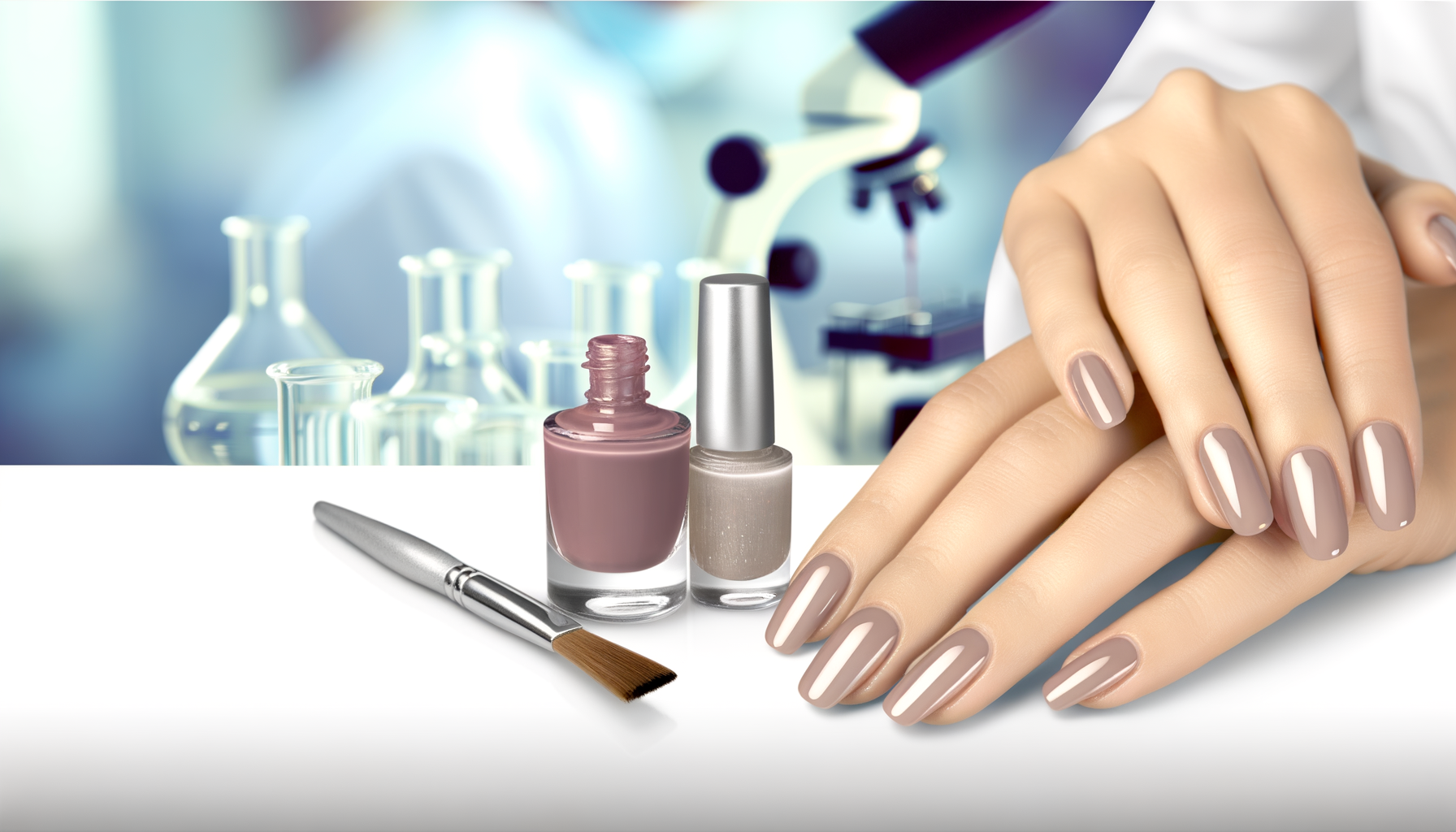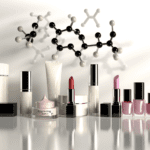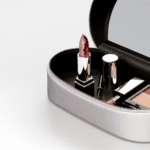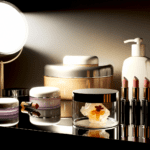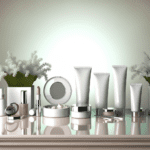Introduction
The Prevalence of Nail Polish in Beauty Routines
Nail polish has become an indispensable part of beauty routines worldwide. A pop of color on the nails is often seen as the finishing touch to a well-groomed appearance. From the bustling streets of metropolitan cities to the quiet corners of small towns, the sight of people with freshly painted nails is ubiquitous. The ritual of applying nail polish transcends age and culture, symbolizing both self-expression and adherence to fashion trends.
Rising Concerns Over Chemical Exposure
However, beneath the glossy exterior of this beauty staple lies a growing concern. As consumers become more health-conscious, the scrutiny of cosmetic ingredients intensifies. The beauty industry, known for its use of a wide array of chemicals, is facing questions about the safety of these substances. Among these, nail polishes have come under particular scrutiny due to their direct and prolonged contact with the skin and their potential for chemical absorption.
Overview of Dibutyl Phthalate (DBP) in Cosmetics
Dibutyl Phthalate, commonly referred to as DBP, is one such chemical that has been widely used in nail polishes. It serves as a plasticizer that prevents nail lacquers from becoming brittle, but it is also a known endocrine disruptor. The presence of DBP and other similar compounds in cosmetics has raised alarms due to their potential links to various health issues, including hormonal imbalances and reproductive problems. This has led to a reevaluation of cosmetic formulations, with a push towards safer and more transparent ingredient lists.
Purpose of the Article
The purpose of this article is to delve into the role of Dibutyl Phthalate in nail polishes and to explore the implications of its use for consumer health. We will examine the chemical properties of DBP, its historical and current use in the cosmetic industry, and the health concerns it raises. Additionally, we will discuss the regulatory status of DBP, alternatives to this controversial ingredient, and strategies for reducing chemical exposure. Our goal is to provide a comprehensive overview that empowers consumers to make informed decisions about their beauty products and to advocate for a healthier, toxin-free lifestyle.

Do you have the most commonly used but toxic, disease bringing chemicals in your skin care? Many chemicals in skincare are hormone disruptors and make menopause symptoms worse.
Find out more…
Understanding Dibutyl Phthalate
Chemical Properties of DBP
Dibutyl Phthalate (DBP) is a chemical compound belonging to the group of phthalates, which are esters of phthalic acid. It is a colorless to faint yellow, oily liquid with a slight aromatic odor. DBP is poorly soluble in water but highly soluble in a variety of organic solvents, which makes it an ideal plasticizer—a substance added to materials to increase their flexibility, transparency, durability, and longevity.
Historical Use in Nail Polishes
Historically, DBP has been a common ingredient in nail polishes, valued for its ability to reduce cracking, improve the longevity of the nail polish film, and enhance the overall appearance of the final product. Its use in cosmetics dates back several decades, with its inclusion in nail polish formulations becoming widespread due to its plasticizing properties that prevent chipping and impart a smooth application.
Why DBP is Used in Nail Polish Formulations
The primary reason for the inclusion of DBP in nail polish is its effectiveness as a plasticizer. DBP helps to create a flexible film that adheres well to the nail surface, reducing the likelihood of the polish becoming brittle and flaking off. It also contributes to the gloss and shine of the polish, making it a desirable additive from a cosmetic standpoint. Additionally, DBP can act as a solvent for other ingredients, aiding in the uniform distribution of color and pigments.
Regulatory Status of DBP in Cosmetics
The regulatory status of DBP in cosmetics varies by region. In the European Union, DBP has been banned from use in all cosmetics, including nail polishes, due to concerns over its potential health risks, particularly its classification as a reproductive toxin. In contrast, the United States has not issued a ban on DBP in cosmetics, although its use has become less common due to consumer demand for safer and “3-free” (free of DBP, toluene, and formaldehyde) nail polish options. Despite this, the U.S. Food and Drug Administration (FDA) does not currently prohibit the use of DBP in nail polishes, and it remains legal for cosmetic use within the country. However, the growing awareness of potential health risks associated with phthalates like DBP has led to increased scrutiny and a shift towards DBP-free products in the market.
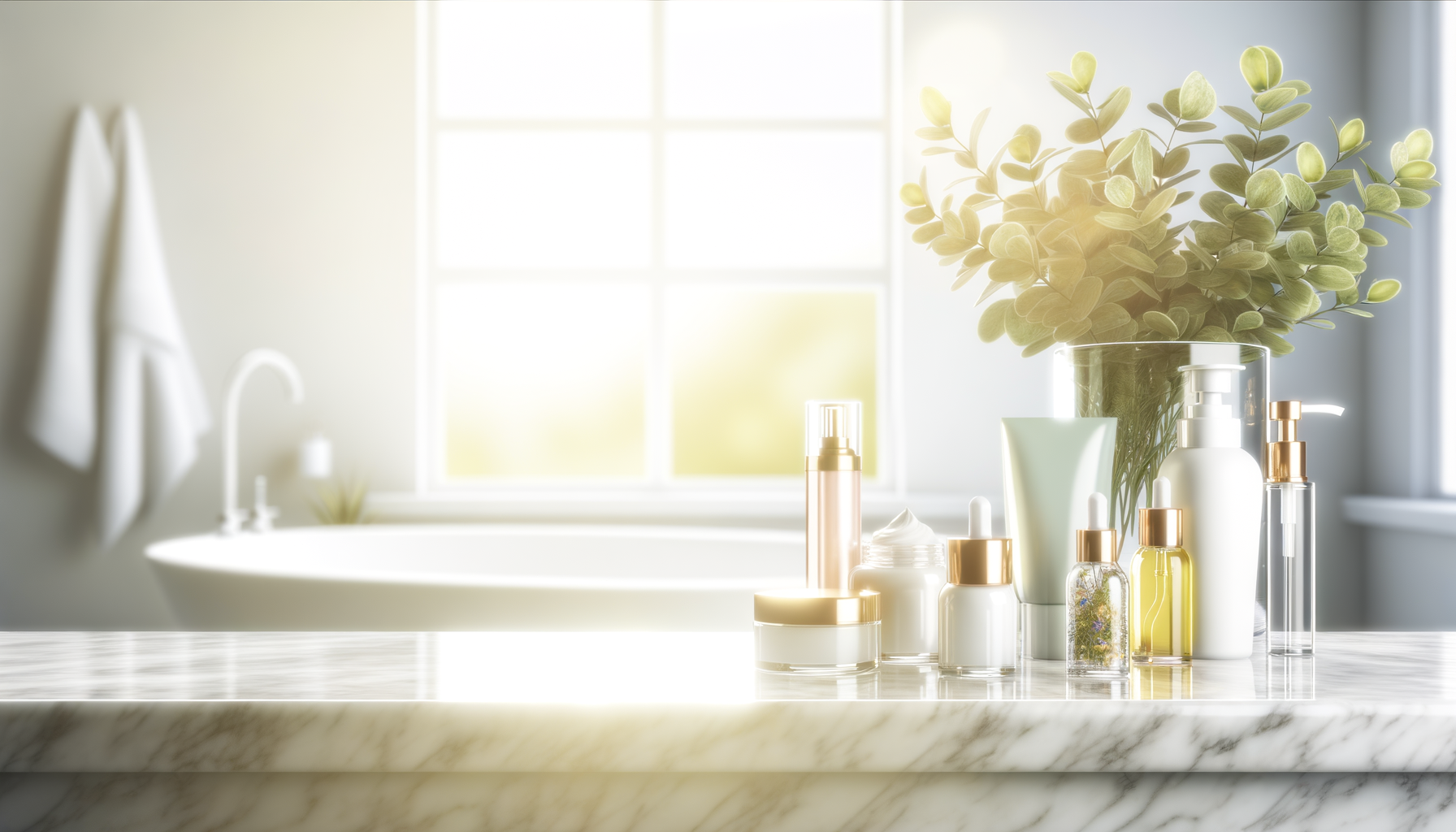
Popular Read: Endocrine Disruptors in Skincare: What You Need to Know
Health Concerns Associated with DBP
Endocrine Disruption Potential
Dibutyl Phthalate (DBP) is widely recognized for its role as a plasticizer in nail polishes, making them more flexible and less prone to cracking. However, its potential to disrupt the endocrine system has raised significant health concerns. Endocrine disruptors are chemicals that can interfere with hormone systems, potentially leading to adverse developmental, reproductive, neurological, and immune effects in both humans and wildlife. DBP, in particular, has been shown to mimic estrogen, a primary female sex hormone, and can thus interfere with the normal functioning of hormonal systems.
Links to Breast Cancer and Hormonal Imbalances
Research has suggested a possible link between exposure to phthalates like DBP and an increased risk of breast cancer. The mechanism is thought to involve the chemical’s estrogenic activity, which can influence the growth and proliferation of breast cancer cells. Additionally, DBP’s ability to mimic or block hormones can lead to hormonal imbalances, which may have wide-ranging effects on health, including the potential to exacerbate conditions sensitive to hormonal levels.
Impact on Reproductive Health
DBP’s impact on reproductive health is particularly alarming. Studies have indicated that exposure to this chemical may lead to reduced fertility, changes in the development of the male reproductive system, and other reproductive issues. Pregnant women and their developing fetuses are especially vulnerable to the effects of DBP, as it can cross the placental barrier and potentially lead to developmental and reproductive toxicity.
Other Potential Health Risks
Beyond its endocrine-disrupting effects, DBP may pose other health risks. These can include but are not limited to, respiratory problems, skin irritation, and possibly exacerbating allergic reactions. Individuals with prolonged exposure, such as those working in nail salons, may be at a higher risk of experiencing these adverse effects. It is crucial to note that while the full extent of DBP’s health risks is still being studied, the evidence thus far has prompted regulatory agencies in Europe to ban its use in cosmetics, signaling the severity of potential concerns.
Conclusion: The presence of DBP in nail polishes is a cause for concern due to its potential as an endocrine disruptor, its links to breast cancer and hormonal imbalances, its impact on reproductive health, and other possible health risks. Consumers are encouraged to seek out “3-free” or “5-free” nail polishes that do not contain DBP and other harmful chemicals, and to advocate for greater transparency and safety in cosmetic formulations.
DBP Exposure and Aging
Concerns for women going through menopause
As women approach menopause, their bodies undergo significant hormonal changes that can be further complicated by exposure to endocrine-disrupting chemicals like dibutyl phthalate (DBP). Research suggests that DBP may exacerbate symptoms associated with menopause, such as hot flashes, mood swings, and decreased bone density. The potential for DBP to disrupt the delicate hormonal balance during this critical life stage raises concerns about its impact on women’s health and the need for more targeted studies.
Effects on energy levels and metabolism
DBP exposure has been linked to metabolic disruptions that can affect energy levels. Studies indicate that DBP may interfere with thyroid hormone function, which plays a crucial role in regulating metabolism. This disruption can lead to feelings of fatigue and make it more challenging to maintain a healthy weight, particularly as individuals age and their metabolic rates naturally decline.
DBP and skin aging
The skin, as the largest organ of the body, is not immune to the effects of DBP exposure. Phthalates like DBP may accelerate the skin aging process by promoting oxidative stress and inflammation, leading to the breakdown of collagen and elastin. These structural proteins are essential for maintaining skin’s elasticity and firmness, and their degradation can result in the appearance of fine lines, wrinkles, and sagging.
Mitigating the effects of aging with a chemical-free lifestyle
Adopting a chemical-free lifestyle can be a proactive approach to mitigating the effects of aging associated with DBP exposure. This includes choosing personal care products that are free from phthalates, eating organic foods to reduce ingestion of DBP from packaging, and advocating for stricter regulations on the use of harmful chemicals in consumer products. Emphasizing the importance of a clean environment, both internally and externally, can support hormonal balance and overall well-being as individuals age.
Do you know the 3 main ways how your body is exposed to harmful chemicals, which affect your hormones, your thyroid, health and beauty?
If not, it may be time to learn about them. It takes about 1-2 minutes.
We have a few suggestions how to avoid these silent health and immune system killers in our new guide.
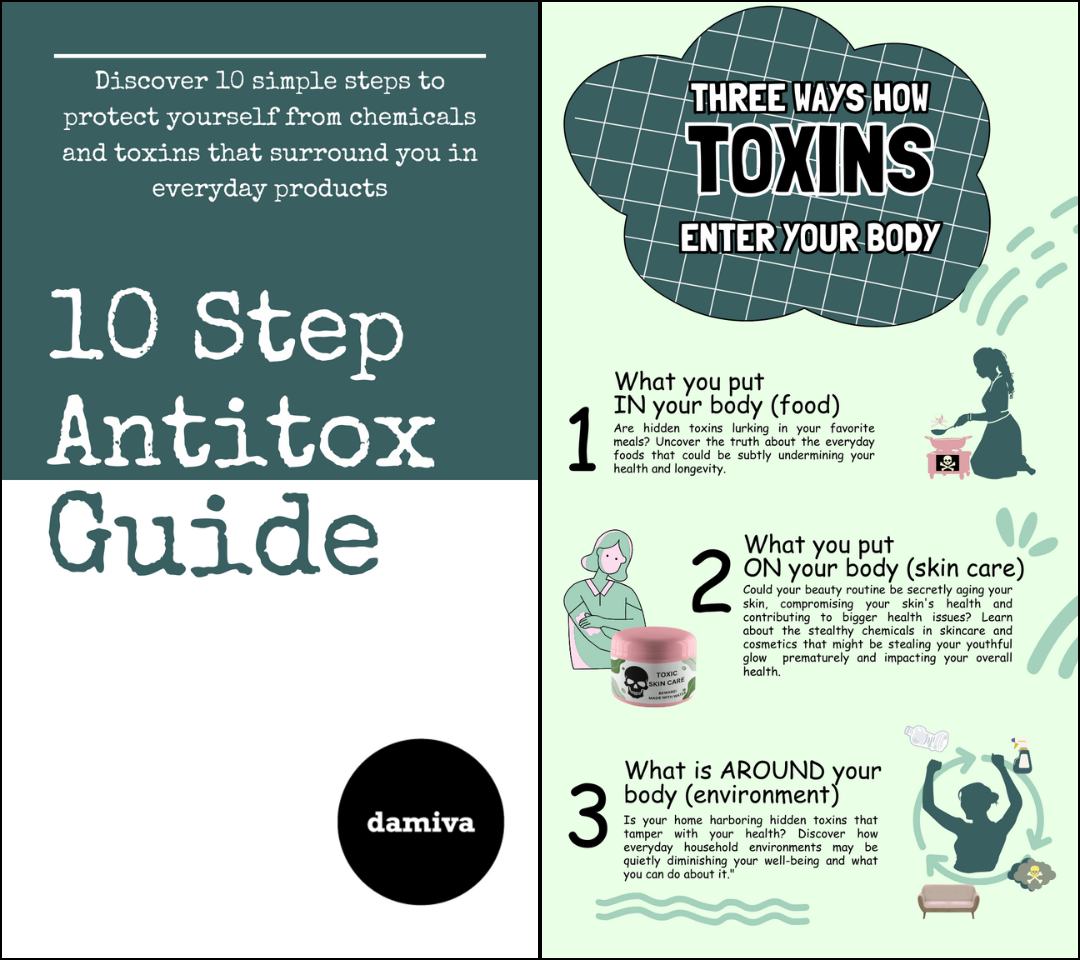
Alternatives to DBP in Nail Polishes
Natural and Organic Nail Polish Options
As awareness of the potential health risks associated with dibutyl phthalate (DBP) grows, many consumers are turning to natural and organic nail polish options. These products are formulated without the “toxic trio” of DBP, toluene, and formaldehyde, and often go further by excluding additional harmful chemicals. Brands like Piggy Paint and 100% Pure offer water-based formulas that are free from a multitude of toxins, making them safer for children, pregnant women, and anyone looking to reduce their chemical exposure.
Innovations in Non-Toxic Nail Polish Formulations
The beauty industry has responded to consumer demand for safer products with innovations in non-toxic nail polish formulations. Brands such as Butter London and Côte have developed polishes that are not only free from DBP but also omit other harmful ingredients, offering “10-free” or even “21-free” options. These advanced formulas provide the same high-quality finish and durability as traditional polishes, without the associated health risks.
How to Identify DBP-Free Products
Identifying DBP-free products can be challenging, but there are some tips to help consumers make informed choices. Look for labels such as “3-free,” “5-free,” or higher, which indicate the number of harmful chemicals that have been removed. Additionally, researching brands and checking the Environmental Working Group’s Skin Deep Database can provide insights into the safety of nail polish ingredients. Brands like Zoya and Essie offer extensive ranges of DBP-free polishes, ensuring that consumers have a variety of safe options to choose from.
The Effectiveness of DBP Alternatives
The effectiveness of DBP alternatives is a common concern for those switching to non-toxic nail polishes. Fortunately, many of these alternatives perform just as well, if not better, than their toxic counterparts. Non-toxic polishes have been shown to be long-lasting, chip-resistant, and available in a wide range of vibrant colors. Brands like JINsoon and Deborah Lippmann are celebrated for their exceptional durability and finish, proving that it is possible to achieve a beautiful manicure without compromising on health or quality.
Do you know the three main ways that your body gets in touch with harmful chemicals with everyday products? Knowledge is Power!
The Ultimate Detox Guide will tell you how to lower your exposure to harmful chemicals!

Detoxification and Prevention Strategies
Tips for Reducing Chemical Exposure in Personal Care
Minimizing exposure to harmful chemicals in personal care products, particularly nail polishes containing dibutyl phthalate (DBP), is crucial for maintaining good health. Here are some practical tips:
- Choose nail polishes free of DBP, toluene, and formaldehyde, often labeled as “3-free” or higher (5-, 7-, 10-free).
- Opt for nail polish removers without butyl acetate, methyl acetate, or ethyl acetate.
- Reduce the number of products used and the quantity of each to minimize chemical exposure.
- Regularly wash hands to remove any chemical residue.
- Seek out certifications like “Green Salon” or “Healthy Salon” when choosing a salon.
Use chemical-free, all-natural skincare only. It is easy to identify because you only need to choose products that do not contain water, as water requires chemical preservatives. Read more here.
Detoxification Methods for Eliminating Toxins
Detoxification is a process that helps the body remove toxins, including those from DBP exposure. Some methods include:
- Drinking plenty of water to help flush out toxins.
- Engaging in regular physical activity to promote circulation and toxin elimination.
- Consuming a diet rich in antioxidants and fibers that support the body’s natural detoxification processes.
- Using sauna therapy, which can aid in the elimination of toxins through sweat.
Lifestyle Changes to Support Hormonal Balance
DBP has been linked to hormonal imbalances, so it’s important to adopt lifestyle habits that support endocrine health:
- Maintain a balanced diet with an emphasis on organic produce to reduce pesticide intake.
- Limit processed foods and sugars that can disrupt hormonal equilibrium.
- Ensure adequate sleep and stress management techniques like meditation or yoga.
- Avoid plastic containers with BPA, a known endocrine disruptor, to reduce further exposure.
Importance of Product Transparency and Consumer Awareness
Being informed is the first step towards making safer choices in personal care:
- Read labels carefully and understand the ingredients in your nail care products.
- Support brands that prioritize transparency and provide detailed information about their formulations.
- Stay informed about the latest research on cosmetic ingredients and their health impacts.
- Advocate for stricter regulations in the cosmetics industry to ensure safer products for consumers.
In conclusion, by incorporating these detoxification and prevention strategies into your routine, you can significantly reduce your exposure to DBP and other harmful chemicals, supporting a healthier lifestyle and hormonal balance.
By the way, something for you, a little gift!!!
I am just in the middle of publishing my book. It’s about How women can balance their hormones. One part is about food and diet, of course.
Follow this link and enter your email.
I will send you this part of the book for free once the book is published. It has many concrete, practical tips and recipes and will help you feel better during menopause or times of Big hormonal fluctuations.
Annette, Damiva Lead for Health & Wellness

Conclusion
Summarizing the Risks of DBP in Nail Polishes
The evidence presented throughout this article underscores the potential dangers associated with dibutyl phthalate (DBP) in nail polishes. As a chemical that has been linked to endocrine disruption, reproductive health issues, and other serious health risks, the presence of DBP in cosmetic products is a significant concern. Despite the shift towards “3-Free” and even “10-Free” nail polishes, vigilance is required, as the replacement chemicals may also pose health risks. The lack of comprehensive regulation and transparency in the beauty industry further complicates the ability of consumers to make informed decisions.
Empowering Choices for a Healthier Beauty Routine
Consumers have the power to influence the market by choosing products that align with their health and safety values. Opting for nail polishes that are free from DBP and other toxic chemicals is a step towards a healthier beauty routine. Brands like Noorb Beauty, Zoya, and Ella+Mila exemplify the commitment to non-toxic formulations, offering safer alternatives without compromising on quality or aesthetics. By supporting these brands, consumers can drive demand for healthier products and encourage industry-wide change.
The Future of Nail Polish Industry Standards
The nail polish industry is at a crossroads, with growing consumer awareness and demand for safer products. The future of industry standards lies in the adoption of more stringent regulations, akin to those in the European Union, and the development of non-toxic alternatives that do not sacrifice performance. As research continues to reveal the health impacts of chemical exposure, it is imperative that the industry evolves to prioritize consumer and worker safety.
Final Thoughts on Maintaining a Toxic-Free Lifestyle
Maintaining a toxic-free lifestyle extends beyond the choice of nail polish. It encompasses a broader commitment to reducing chemical exposure in all personal care products. Consumers can take proactive steps by educating themselves on the ingredients in their beauty products, advocating for greater transparency and regulation, and supporting initiatives that promote safer alternatives. By doing so, individuals not only protect their own health but also contribute to a larger movement towards a more conscious and health-focused beauty industry.
